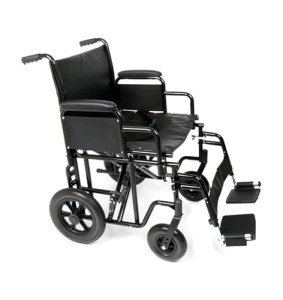자유게시판
| 제목 | You'll Never Guess This Bariatric Wheelchair 24 Inch Seat's Benefits |
|---|---|
| 작성자 | Don |
| 조회수 | 58회 |
| 작성일 | 25-04-08 08:07 |
| 링크 |
본문
 bariatric wheelchair for sale near me Wheelchair Seat Width
bariatric wheelchair for sale near me Wheelchair Seat WidthSeat Width
Having the appropriate seat width is necessary to wheelchair users who spend longer durations in their chairs. Too narrow a seat will trigger pressure on the hips and thighs which could cause sores or pressure points. Having too wide a seat can likewise make it tough for the user to reach the hand rims to move themselves or maneuver in little spaces.
To determine the right seat width an individual would rest on a chair typically and have their measurement taken across their lap at the widest point which is generally their hips. A wheelchair measuring tape can be used to determine this, however a yard stick is chosen as it avoids individuals from covering the tape around their hips which would offer an incorrect result.
The standard wheelchair seat width is 16" (narrow adult), 18" (standard grownup), and 20" (large grownup). For bariatric patients, a 24" seat is available. This sturdy additional broad bariatric wheelchair 400 lb capacity wheelchair from Medline includes swing-away footrests, a carbon steel frame with rust- and chip-resistant chrome plating, and easy-to-clean vinyl upholstery. It has a weight capacity of 500 pounds.
Seat Depth
Typically, the seat depth of a bariatric aids wheelchair was included 2" to the measurement taken at the user's widest point (normally their hips). This was implied to accommodate extra layers of clothing that may be used throughout cold weather. Nevertheless, this practice is ending up being less common as wheelchair users are able to spend more time inside and are not using long coats. This makes the seat depth of a chair less important when selecting a bariatric wheelchair. Nevertheless, it is still crucial to pick an option that provides appropriate assistance for bigger users.
The Medline folding extra wide Bariatric wheelchair 24 inch seat manual wheelchair includes a comfortable 24" seat width and a sturdy slide tube silver vein frame. It also has an adjustable axle and tool-free elevating legrests.
Seat Height
When it comes to identifying the proper wheelchair seat width you should constantly measure from the user's widest point which is typically their hips. You will likewise need to consider whether the user is going to be wearing a winter season coat as this may include 2" to the width needed.
When a wheelchair is in use it should only be run on level surfaces with the wheel locks fully engaged. This is to avoid the chair from having the ability to move slopes that are 10 degrees or higher. It is likewise important to keep in mind that any activity that may move the center of mass in the chair should be done with care. This includes reaching for items that need the individual to lean out of their seat or attempting to stand up from it.
Whenever you have the chair in use it is advised that you regularly inspect it for damage and lube any locations that are considered needed. For instance, the casters should be lubed by removing the caster fork and using a multi-purpose grease to use to the caster stem bearings. Likewise, the foot plates can be changed by loosening the bolt and then moving them to the desired position. This allows the feet to sit easily on the footplate and avoids any pressure points from forming. This can be really uneasy for the user and if left ignored, can result in press sores.
Weight Capacity
Bariatric wheelchairs are designed to support more weight than basic wheelchairs. This makes them tougher and much better geared up to handle falls. They are also typically larger and wider, making them less maneuverable in tight spaces than standard wheelchairs. They require cars with special ramps and lifts to pack them, as well as chauffeurs who understand how to best transport them from one location to the next.
When choosing a wheelchair, consider its weight capacity as it will be the primary determining consider whether it will accommodate your guest's requirements. The weight capacity of the chair is often noted as a static load, suggesting that it suggests the quantity of weight the chair can conveniently hold while stalling. Nevertheless, some producers likewise list an active load that is based upon a drop test and can imitate the effect of somebody taking a seat in the chair. This may be a more reliable measurement of the weight limit, depending upon your requirements.
 If you plan to perform activities that move your center of mass in the seat (such as grabbing things), make certain to have front casters pointed in a forward instructions and wheel locks engaged so the chair will not topple. Likewise, check that casters are lubed regularly to prevent excessive wear and abrasions. The lubrication treatment includes removing the fork, separating the caster from the wheel, and greasing the caster stem bearings with premium multi-purpose grease.
If you plan to perform activities that move your center of mass in the seat (such as grabbing things), make certain to have front casters pointed in a forward instructions and wheel locks engaged so the chair will not topple. Likewise, check that casters are lubed regularly to prevent excessive wear and abrasions. The lubrication treatment includes removing the fork, separating the caster from the wheel, and greasing the caster stem bearings with premium multi-purpose grease.



